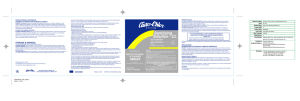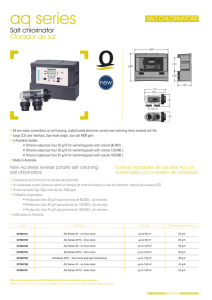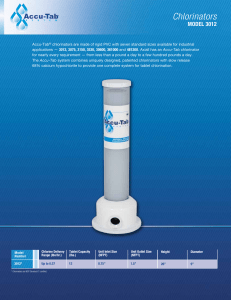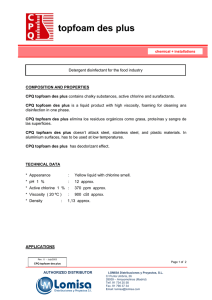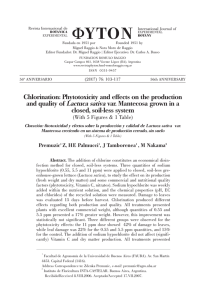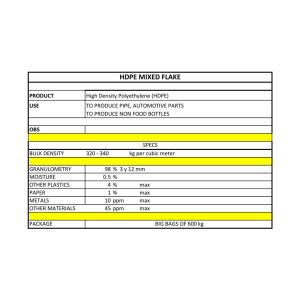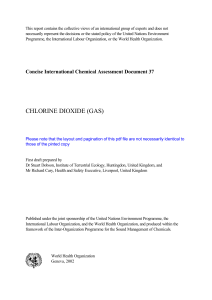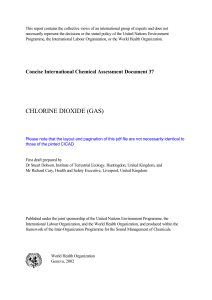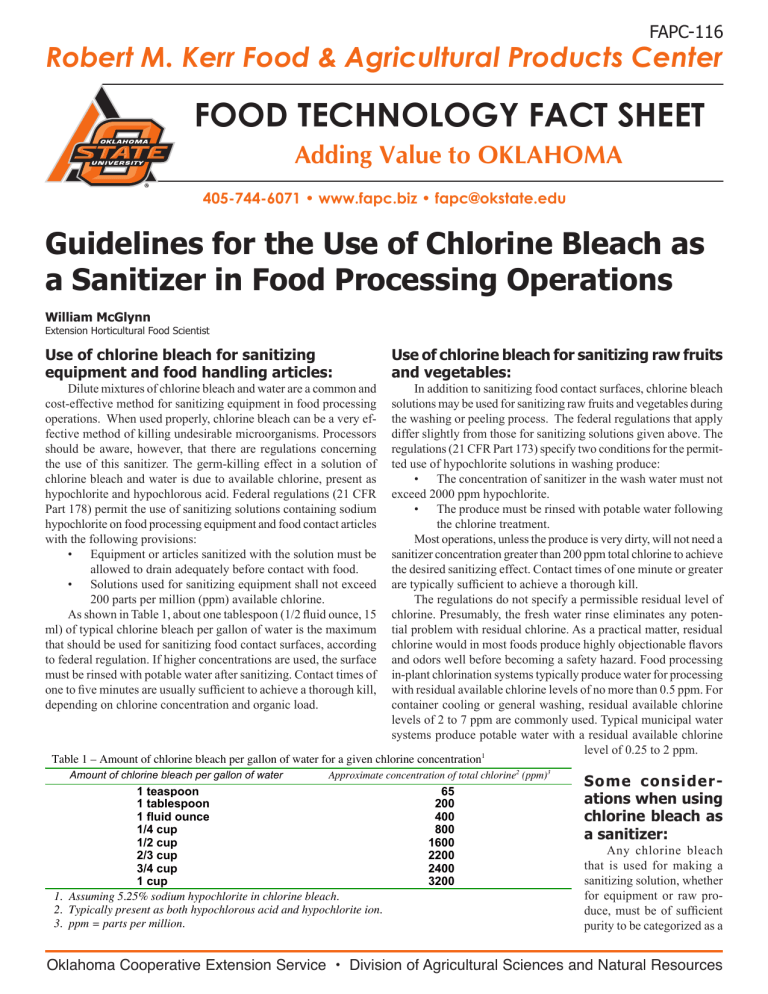
FAPC-116 Robert M. Kerr Food & Agricultural Products Center FOOD TECHNOLOGY FACT SHEET Adding Value to OKLAHOMA 405-744-6071 • www.fapc.biz • fapc@okstate.edu Guidelines for the Use of Chlorine Bleach as a Sanitizer in Food Processing Operations William McGlynn Extension Horticultural Food Scientist Use of chlorine bleach for sanitizing equipment and food handling articles: Dilute mixtures of chlorine bleach and water are a common and cost-effective method for sanitizing equipment in food processing operations. When used properly, chlorine bleach can be a very effective method of killing undesirable microorganisms. Processors should be aware, however, that there are regulations concerning the use of this sanitizer. The germ-killing effect in a solution of chlorine bleach and water is due to available chlorine, present as hypochlorite and hypochlorous acid. Federal regulations (21 CFR Part 178) permit the use of sanitizing solutions containing sodium hypochlorite on food processing equipment and food contact articles with the following provisions: • Equipment or articles sanitized with the solution must be allowed to drain adequately before contact with food. • Solutions used for sanitizing equipment shall not exceed 200 parts per million (ppm) available chlorine. As shown in Table 1, about one tablespoon (1/2 fluid ounce, 15 ml) of typical chlorine bleach per gallon of water is the maximum that should be used for sanitizing food contact surfaces, according to federal regulation. If higher concentrations are used, the surface must be rinsed with potable water after sanitizing. Contact times of one to five minutes are usually sufficient to achieve a thorough kill, depending on chlorine concentration and organic load. Use of chlorine bleach for sanitizing raw fruits and vegetables: In addition to sanitizing food contact surfaces, chlorine bleach solutions may be used for sanitizing raw fruits and vegetables during the washing or peeling process. The federal regulations that apply differ slightly from those for sanitizing solutions given above. The regulations (21 CFR Part 173) specify two conditions for the permitted use of hypochlorite solutions in washing produce: • The concentration of sanitizer in the wash water must not exceed 2000 ppm hypochlorite. • The produce must be rinsed with potable water following the chlorine treatment. Most operations, unless the produce is very dirty, will not need a sanitizer concentration greater than 200 ppm total chlorine to achieve the desired sanitizing effect. Contact times of one minute or greater are typically sufficient to achieve a thorough kill. The regulations do not specify a permissible residual level of chlorine. Presumably, the fresh water rinse eliminates any potential problem with residual chlorine. As a practical matter, residual chlorine would in most foods produce highly objectionable flavors and odors well before becoming a safety hazard. Food processing in-plant chlorination systems typically produce water for processing with residual available chlorine levels of no more than 0.5 ppm. For container cooling or general washing, residual available chlorine levels of 2 to 7 ppm are commonly used. Typical municipal water systems produce potable water with a residual available chlorine level of 0.25 to 2 ppm. 1 Table 1 – Amount of chlorine bleach per gallon of water for a given chlorine concentration Amount of chlorine bleach per gallon of water Approximate concentration of total chlorine2 (ppm)3 1 teaspoon 1 tablespoon 1 fluid ounce 1/4 cup 1/2 cup 2/3 cup 3/4 cup 1 cup 1. Assuming 5.25% sodium hypochlorite in chlorine bleach. 2. Typically present as both hypochlorous acid and hypochlorite ion. 3. ppm = parts per million. 65 200 400 800 1600 2200 2400 3200 Some considerations when using chlorine bleach as a sanitizer: Any chlorine bleach that is used for making a sanitizing solution, whether for equipment or raw produce, must be of sufficient purity to be categorized as a Oklahoma Cooperative Extension Service • Division of Agricultural Sciences and Natural Resources NaOCl + H2O OCl- + Na+ + OH- + H+ Then, the hypochlorite ion (OCl-) reacts with the hydrogen ions in the water to form hypochlorous acid. OCl- + H+ +OH - HOCl + OH - As seen in Figure 1 below, most of the chlorine is in the form of hypochlorous acid. As the pH drops, another change occurs, resulting in an equilibrium reaction between hypochlorous acid and free chlorine. The chlorine molecules form chlorine gas (Cl2) according to the following reaction: HOCl + H+ + Cl - Cl2 + H2O This is a reaction to be aware of since chlorine gas is highly toxic. For this reason, never add acid to a chlorine solution without monitoring its pH. One common source of acid is vinegar - often used as a cleaning aid. Some commercial cleaning agents are also acidic. The chemistry of hypochlorite and water mixtures described above shows that chlorine sanitizing rinses are most effective in an Figure 1 -- Effect of pH on hypochlorous acid content. 100 90 80 % Undissociated HOCl “food grade” substance. Some commercially available household chlorine bleaches contain fragrances, thickeners and/or other additives not approved for food use. These products are not suitable for making sanitizing solutions. If any chemicals are used to alter or buffer the pH of a sanitizing solution, these likewise should be “food grade.” And finally, only potable water should be used in making sanitizing solutions. Chlorine bleach has a distinctive, powerful and unpleasant odor. It is an effective sanitizer but can easily damage the quality of processed foods if not used properly. Care should be taken in using chlorinated water for brine or syrup. Even at low levels, chlorinated water may produce undesirable off-flavors in processed foods. This may be a particular problem with syrup or starch solutions since these tend to entrap the chlorine. Heating chlorinated water to typical processing temperatures, 150° to 200°F, prior to formulating the brine, syrup or sauce will minimize potential problems; this amount of heat easily drives off residual chlorine. Chlorine loses its effectiveness quickly in the presence of oil, dirt and organic material. Wash water should be changed when it becomes dirty. For very dirty produce, the best approach is to have an initial washing step to remove excess dirt prior to the sanitizing treatment. Chlorine solutions are by nature highly corrosive; they should not be used on surfaces that are prone to rust. Other sanitizers, such as quaternary ammonia compounds, may often be used on these surfaces. In addition, chlorine solutions are irritating to the skin and the fumes irritate the respiratory tract. These solutions should only be used with adequate ventilation and protective clothing. The effectiveness of chlorine as a sanitizer is determined in large part by pH. This is because when sodium hypochlorite (NaOCl) is mixed with water an equilibrium reaction between hypochlorite and hypochlorous acid (HOCl, the active sanitizing agent) occurs. This reaction occurs as follows: First, the NaOCl dissolves and chemically breaks apart in the water. 70 HOCl Cl 2 OCl - 60 50 40 30 20 10 0 0 1 2 3 4 5 6 7 8 9 10 11 12 13 14 pH Value of chlorine solution acid pH range. The recommended pH range for an effective and safe saniizing solution is 6.5 to 7.5. Solutions with pH values lower than 6.0 are more corrosive; this will shorten the life of treated equipment. Solutions with pH values lower than 5.0 will begin to generate potentially harmful levels of chlorine gas, and solutions with pH values greater than 8.0 quickly lose their effectiveness as sanitizers. High pH values may become an issue if the water used for the sanitizing solution is naturally alkaline (pH > 7.0). It may also be a problem if detergent residues, which are usually alkaline, are left on equipment or food contact surfaces sanitized with chlorine. Be sure to rinse surfaces as well as possible before using a chlorine sanitizing rinse. Chlorine test kits are available to test the level of active chlorine present in a solution. These commonly involve a color change. Some tests employ strips of paper treated with chemicals that change color based on the chlorine concentration and some employ liquid reagents that change color when added to a chlorine solution. In either case, the resulting color is compared to a standard chart or read by a simple color meter to give a measure of active chlorine present in solution. These test kits are available from scientific supply houses and/or sanitizer supply companies. Many kits have a limited range of measurable chlorine concentrations, often with an upper limit of 10-100 ppm. In these cases, higher chlorine concentrations may be measured by diluting the test sample as needed and using the dilution factor to figure the actual chlorine concentration. References Troller, J.A. "Cleaning and Sanitizing," Chapter 5 in Sanitation in Food Processing, Academic Press, New York, NY, pp. 95-101, 1983. White, G.C. Handbook of Cholorination, 2nd ed. Van Nostrand Reinhold, New York, NY, pp 150-213, 1986. National Food Processors Association. "Food Plant Sanitation, "Chapter 5 in Canned Foods: Principles of Thermal Process Control, Acidification, and Container Closure Evaluation, 6th ed. A Gavin and L.M. Weddig (Ed.), The Food Processors Institute, Washington D.C., pp. 35-47, 1995. Oklahoma State University, in compliance with Title VI and VII of the Civil Rights Act of 1964, Executive Order 11246 as amended, Title IX of the Education Amendments of 1972, Americans with Disabilities Act of 1990, and other federal laws and regulations, does not discriminate on the basis of race, color, national origin, sex, age, religion, disability, or status as a veteran in any of its policies, practices or procedures. This includes but is not limited to admissions, employment, financial aid, and educational services. Issued in furtherance of Cooperative Extension work, acts of May 8 and June 30, 1914, in cooperation with the U.S. Department of Agriculture, Robert E. Whitson, Director of Cooperative Extension Service, Oklahoma State University, Stillwater, Oklahoma. This publication is printed and issued by Oklahoma State University as authorized by the Dean of the Division of Agricultural Sciences and Natural Resources and has been prepared and distributed at a cost of 73 cents per copy. 0716 116-2
